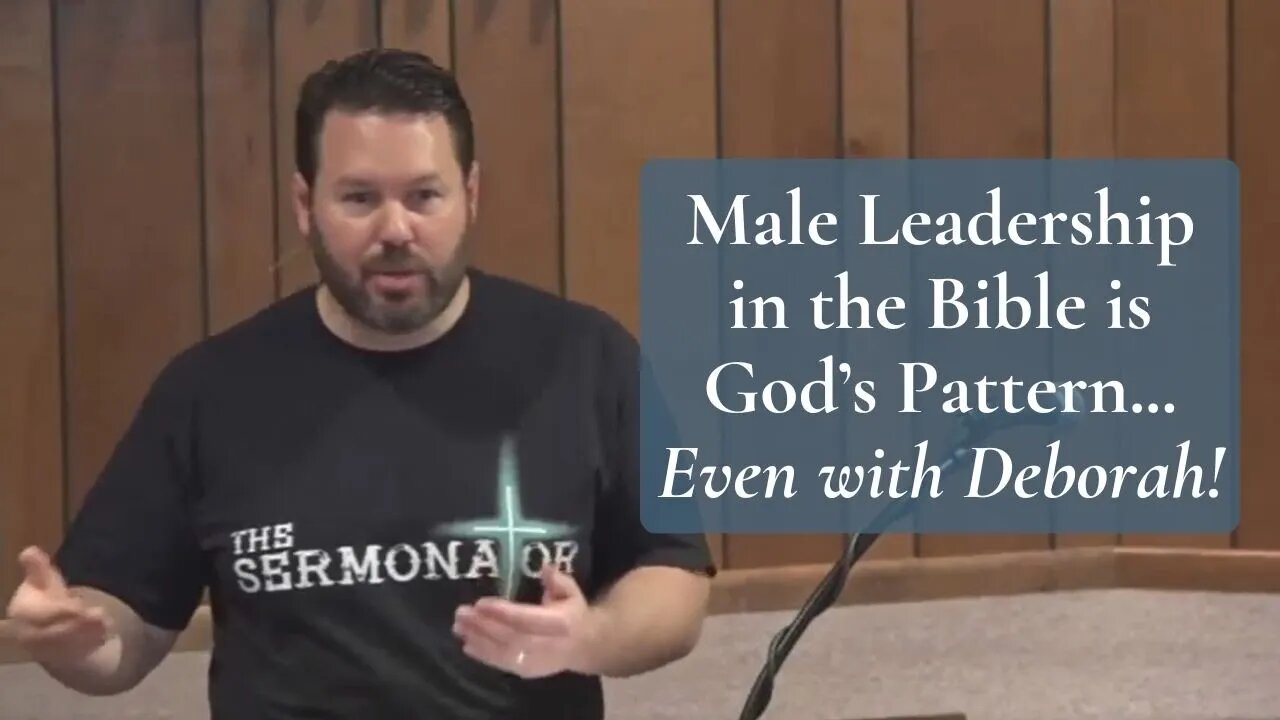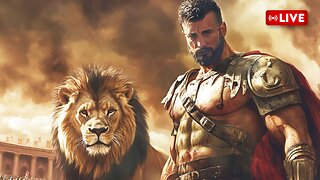Premium Only Content

Male Leadership in the Bible is God’s Pattern...Even with Deborah!
We see male leadership in the Bible even with Deborah (Judges 4). The pattern began at creation and is maintained with patriarchs, priests, kings, apostles, and elders. Paul said, “I do not permit a woman to teach or to assume authority” (1 Timothy2:12). If you’re wondering, “What does the bible say about leadership?” read or listen to this chapter from Your Marriage God’s Way for answers.
Here's the accompanying blog post: https://www.scottlapierre.org/male-leadership-in-the-bible/
View all of Pastor Scott LaPierre's books on Amazon: https://www.amazon.com/Scott-LaPierre/e/B01JT920EQ
Receive a free copy of Pastor Scott's book, "Seven Biblical Insights for Healthy, Joyful, Christ-Centered Marriages": https://www.scottlapierre.org/subscribe/
For Scott LaPierre's conference and speaking information, including testimonies, endorsements, and contact info, please visit: https://www.scottlapierre.org/christian-speaker/
#expositionalbibleteaching #bibleteachingsermons #christiansermonsonfaith #biblepreachingsermons #christianpreachingsermons #biblepreaching #christiansermons #expositionalbiblestudy #sermon #bible #christian #jesus #scottlapierre #expositorypreachingsermons
00:00 Male Leadership in the Bible is God’s Pattern…Even with Deborah!
09:22 Lesson One: We see the pattern of male leadership throughout the Old Testament.
23:49 Lesson Two: Deborah supports male leadership because (Part One) there’s no mention of Deborah being appointed by God.
27:24 Lesson Two: Deborah supports male leadership because (Part Two) her ministry was private versus public.
28:18 Lesson Two: Deborah supports male leadership because (Part Three) she encouraged Barak to lead.
33:25 Lesson Two: Deborah supports male leadership because (Part Four) she rebuked Barak for failing to lead.
34:50 Lesson Two: Deborah supports male leadership because (Part Five) her account is descriptive versus prescriptive.
38:46 Lesson Three: The pattern of male leadership continued into the New Testament.
The pattern of male leadership began at creation and is maintained throughout Scripture:
—There were patriarchs instead of matriarchs.
—The tribes of Israel were named after men.
—The only legitimate mediators between God and people were men (i.e., priests instead of priestesses).
—God appointed kings instead of queens.
—God called men to serve as the focal points of His covenants with mankind (for example, Adam, Noah, Abraham, Moses, David, and Jesus).
Female Leaders in the Bible Don’t Conflict with God’s Pattern of Male Leadership
So why do we see examples of female leadership in Scripture? What about queens, prophetesses, and at least one female judge—Deborah? Were these women anomalies? Are they examples of rebellion against God’s design, or is there another explanation? To answer these questions, let’s look at them individually.
Queens
Scripture mentions three prominent queens, and they fall into two categories: evil and good.
Jezebel and Athaliah
Jezebel (1 Kings 16-22; 2 Kings 9) and Athaliah (2 Kings 8, 11) were evil women who seized control and became tyrannical leaders. Jezebel instituted the worship of the false god Baal across Israel and persecuted followers of Yahweh. Athaliah murdered her grandchildren upon the death of her son and then seized the throne of Judah. Clearly, neither woman serves as a good example.
Esther
On the other hand, Esther stands in contrast as a godly queen. We see through the account of her life that she supported male leadership through her submission first to her adopted father, Mordecai, and then to her husband, King Xerxes of Persia. This wasn’t the only factor that allowed her to save her people from annihilation. There was also her courage in going before the king knowing “that any man or woman who goes into the inner court to the king, who has not been called, he has but one law: put all to death, except the one to whom the king holds out the golden scepter, that he may live” (Esther 4:11). All of this reveals a heart that’s yielded to God. The whole of her life contributed to her submissive attitude and made her useful to God.
Priestesses
Under the Mosaic covenant, only men could be priests because they were the teachers: “[The priests] may teach the children of Israel all the statutes which the Lord has spoken” (Leviticus 10:11). When priestesses are mentioned, they are associated with pagan religions such as the worship of Astarte or Baal. Wayne Grudem, professor of theology and cofounder of the Council on Biblical Manhood and Womanhood, explains:
“Think of the Bible as a whole, from Genesis to Revelation. Where is there one example in the entire Bible of a woman publicly teaching an assembled group of God’s people? There is none.”
Wayne Grudem, Evangelical Feminism & Biblical Truth (Wheaton, IL: Crossway, 2012), 82.
Prophetesses
While we find no scriptural examples of women publicly teach...
Read the rest of the blog post: https://www.scottlapierre.org/male-leadership-in-the-bible/
-
 2:21:35
2:21:35
Price of Reason
12 hours agoThe Establishment WORRIES about Elon Musk AGAIN! Superman Trailer Discussion! Sonic 3 Review!
42.5K3 -
 1:14:54
1:14:54
Steve-O's Wild Ride! Podcast
15 hours ago $17.65 earnedZac Brown Reveals The Secrets To HIs Success - Wild Ride #247
65.9K13 -
 4:16:43
4:16:43
JdaDelete
9 hours ago $12.23 earnedProject Zomboid with the Boys | The Great Boner Jam of 2025
41.3K -
 6:00:08
6:00:08
SpartakusLIVE
10 hours agoYoung Spartan STUD teams with old gamers for ultimate BANTER with a SMATTERING of TOXICITY
31.9K -
 1:50:39
1:50:39
Kim Iversen
11 hours agoShocking Proposal: Elon Musk for Speaker of the House?! | IDF Soldiers Reveal Atrocities—'Everyone Is a Terrorist'
77.9K174 -
 43:27
43:27
barstoolsports
14 hours agoOld Dog Bites Back | Surviving Barstool S4 Ep. 9
134K4 -
 5:13:04
5:13:04
Right Side Broadcasting Network
7 days agoLIVE REPLAY: TPUSA's America Fest Conference: Day One - 12/19/24
185K28 -
 1:06:01
1:06:01
Man in America
1 day agoPfizer Has Been Caught RED HANDED w/ Dr. Chris Flowers
62.1K19 -
 2:24:15
2:24:15
Slightly Offensive
12 hours ago $18.44 earnedAttempted ASSASSINATION of Nick J Fuentes LEAVES 1 DEAD! | Guest: Mel K & Breanna Morello
51.9K48 -
 1:43:08
1:43:08
Roseanne Barr
12 hours ago $28.85 earned"Ain't Nobody Good" with Jesse Lee Peterson | The Roseanne Barr Podcast #79
85.2K50